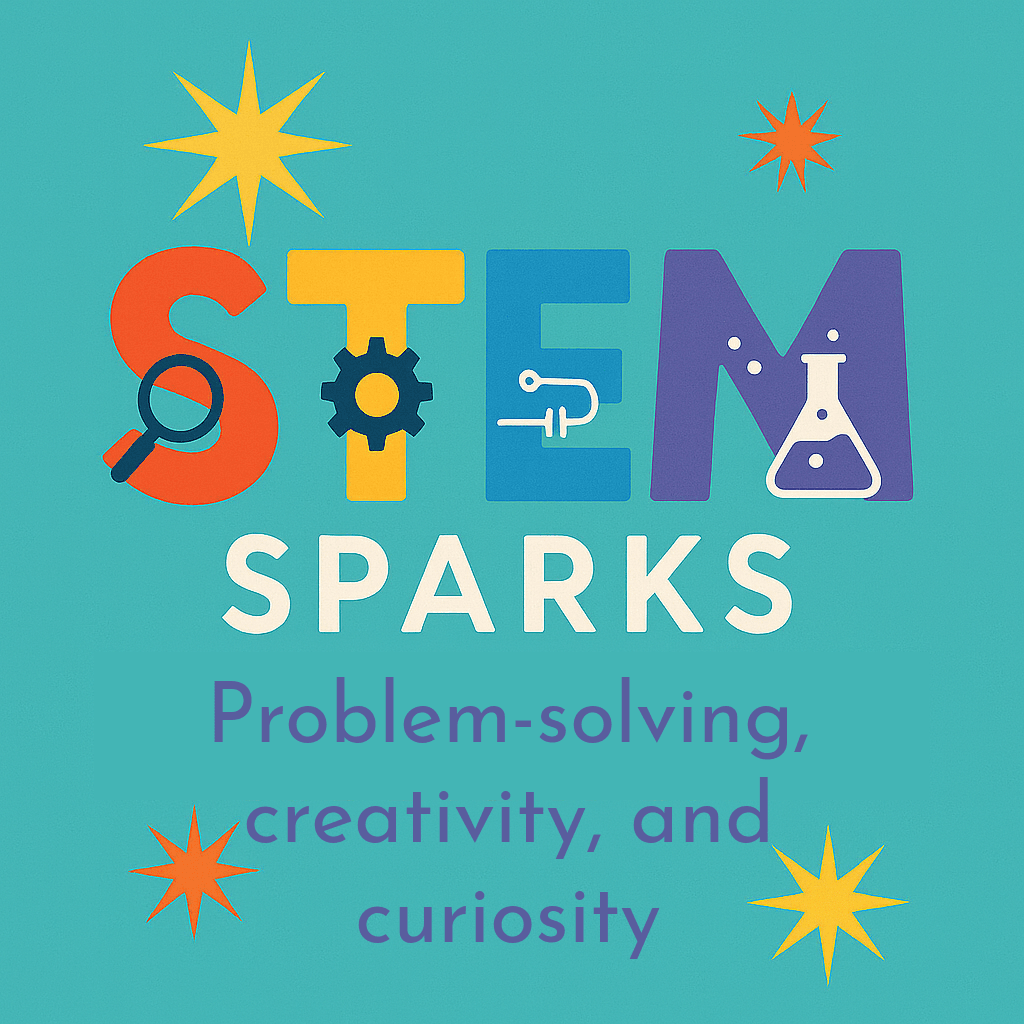
When we hear “STEM,” it’s easy to think of complex equations, lab coats, or rocket launches. But the truth is, science, technology, engineering, and math are not just subjects studied in school or careers pursued later in life – they’re woven into the skills we use every single day. Problem-solving, creativity, and curiosity are at the heart of STEM, and they begin long before anyone steps foot in a classroom or a lab. When families recognize and nurture these everyday sparks, they help build the foundation for tomorrow’s innovators.
Every parent knows the moment when something breaks and a quick solution is needed. Whether it’s figuring out how to fix a bike chain, rearranging schedules to fit in a last-minute commitment, or experimenting with a new recipe when ingredients are missing. These are all examples of problem-solving. In STEM, problem-solving drives discovery. Engineers ask: How can I design this more efficiently? Scientists ask: How can I test this question? At home, children who see problem-solving modeled learn that challenges aren’t roadblocks; they’re opportunities to think differently.
We often think of creativity as belonging to art or music, but it is just as essential in STEM. Creativity allows us to approach problems from new angles and imagine solutions others might not see. When a child builds a blanket fort, invents a new game, or mixes colors while painting, they are engaging in the same kind of imaginative thinking that leads scientists to design new experiments or mathematicians to see patterns others miss. Families can encourage this creativity by asking open-ended questions, celebrating new ideas, and allowing space for exploration (even if it gets a little messy).
Curiosity is the first step of the scientific method, and it often begins with a simple “Why?” Why is the sky blue? Why does bread rise? Why does the phone need charging? When families encourage these questions rather than brushing them aside, they cultivate a mindset that values exploration. Curiosity fuels innovation. It’s what led to vaccines, space travel, and advances in technology we rely on every day. Girls who learn that their curiosity is powerful begin to see themselves not just as students, but as future scientists, engineers, and inventors.
For families, recognizing STEM in everyday life can be empowering. You don’t need to be an expert in physics to encourage a love of STEM. Instead, model problem-solving, celebrate creativity, and nurture curiosity. For women already in STEM, sharing how these skills show up in both your professional and personal life helps demystify the field and makes it more accessible for the next generation. STEM isn’t confined to textbooks or careers…it is happening around us all the time. When girls recognize that the skills they already use are the same ones scientists and engineers rely on, STEM becomes less intimidating and more exciting. At AstraFemina, we believe that showing girls how STEM connects to their daily lives is just as important as teaching them the technical knowledge. Because once they see that they’re already problem-solvers, creators, and curious explorers, the leap into STEM feels not only possible – it feels natural.
STEM Sparks: Try It at Home
You don’t need a lab to spark curiosity! Here are three simple activities families can try together:
1. Kitchen Chemistry – Baking Soda & Vinegar Volcano
- Materials: Baking soda, vinegar, food coloring, a cup or small container.
- What to Do: Add baking soda to the container, mix in food coloring, then pour vinegar over it and watch it fizz.
- The Lesson: Chemical reactions are all around us (sometimes even in the kitchen).
2. Engineering Challenge – The Tallest Tower
- Materials: Marshmallows (or tape) and uncooked spaghetti noodles (or straws).
- What to Do: Challenge your child to build the tallest tower they can using only the materials provided.
- The Lesson: Engineers use creativity, trial, and error to solve problems and improve designs.
3. Curiosity Walk – Nature Detective
- Materials: Notebook, pencil, curiosity.
- What to Do: Take a short walk outdoors and ask your child to observe closely. What colors, sounds, and patterns do they notice? Encourage them to draw or write down questions.
- The Lesson: Science begins with observation and curiosity about the world around us.
STEM isn’t out of reach. It’s already here, in the sparks of problem-solving, creativity, and curiosity that shine every day. By nurturing these sparks at home, families, mothers, and role models can help build the confidence that turns everyday wonder into tomorrow’s STEM breakthroughs.

